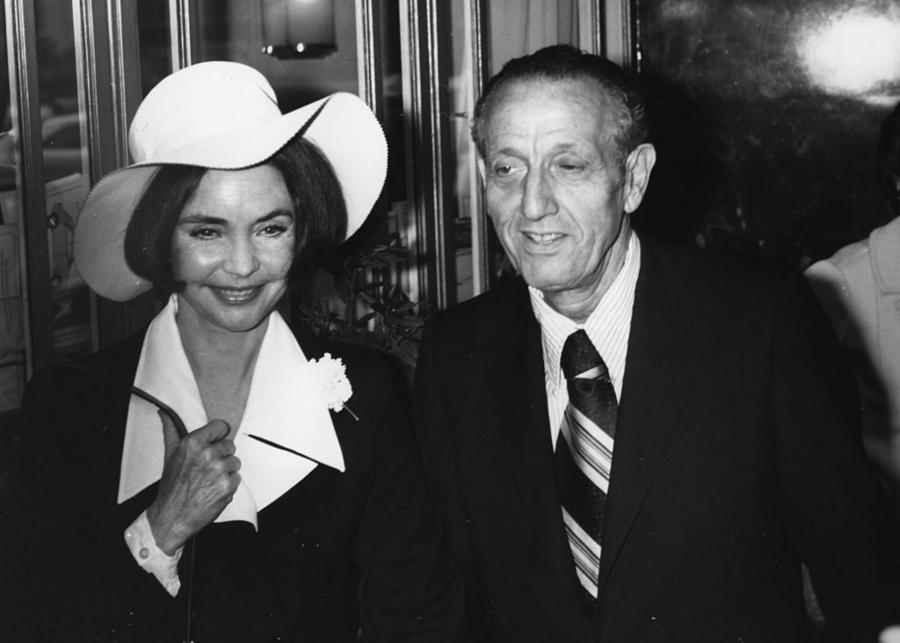Residents of Southern California may have heard the name "Norton Simon," thanks to the Norton Simon Museum. Located in Pasadena, the museum houses an extremely valuable and culturally significant collection of European paintings, Asian sculptures, and more. Outside of SoCal, the name Norton Simon might not be as well-known. And that's a shame because Norton Simon lived an incredibly impressive life. Starting with just $7,000 at the height of the Great Depression, Norton built a food empire that made him one of the richest people in the world during his lifetime.
If you've ever had Hunt's ketchup… which is probably every human on the planet… you put a couple of pennies into Norton Simon's pockets. At the time of his death in 1993, Norton Simon was worth $10 billion. That's worth the same as $20 billion today after adjusting for inflation.
Who was Norton Simon? And how'd he earn such a massive fortune from nothing?

Jennifer Jones and Norton Simon (Douglas Miller/Keystone/Getty Images)
Early Life
Norton Winfred Simon was born in Portland, Oregon, on February 5, 1907. His dad ran a wholesale goods store. When he was 14, Norton's mother died due to complications arising from Type 1 diabetes. When he was 16, Norton, his father, and his siblings relocated to San Francisco.
He graduated from high school in 1923 and enrolled at the University of California, Berkeley. Norton only lasted at Berkeley for a few weeks. He dropped out to launch a sheet metal distribution company in Los Angeles.
The company was successful enough for Norton to set aside $7,000 in savings.
In 1929, at the height of the Great Depression, Norton used that $7,000 to purchase a bankrupt orange juice bottling company in Fullerton, California.
Think of the guts that required. The Great Depression has decimated the global economy and Norton Simon takes his life savings, the equivalent of $110,000 modern dollars, and puts it all into a new venture. What confidence! And foresight!
He renamed the company Val Vita Food Products Company.
Success
In 1943, Val Vita merged with Hunt's Food. With the deal, Norton Simon wound up with a controlling interest in the new combined business, which he renamed Hunt Food and Industries.
Simon proceeded to embark on an aggressive marketing strategy that made Hunt Foods a household name within a few years, thanks largely to aggressive and revolutionary marketing campaigns.
Believe it or not, it was unusual for a canned goods company to advertise in magazines in the mid-1940s. Simon changed that. He bought full-page ads in magazines like Vogue and Life that showed full-color photos of products like Hunt's ketchup or its tomato sauce. The ads featured the company's new slogan, "Hunt's for the best," which became just as famous as the products themselves.
Simon used the profits from Hunts to acquire additional companies outright or large chunks of their stock. Through his holding company, Norton Simon, Inc., he bought up undervalued companies, including McCall's Publishing, Canada Dry, Max Factor, Avis Car Rentals, and television production company Talent Associates.
By the late 1960s, his side investments through Norton Simon Inc. were worth $50 million. That's the same as around $400 million in today's dollars.
In 1960, Hunt's Foods merged with the Wesson Oil & Snowdrift Company and became Hunt-Wesson Foods. After a few more mergers, the company was sold to private equity firm Kohlberg Kravis Roberts in 1985 for $6 billion. KKR flipped it to ConAgra Foods in 1990, but by then, Norton Simon was no longer an equity holder.
Art Collection
Simon began collecting art in 1954 as he was building a home in Los Angeles. He famously decorated the completed mansion with works by Gauguin, Pissarro, and Bonnard.
This experience changed Norton forever. He was hooked on art.
In 1965, he bought Rembrandt's portrait of his son Titus for $2.2 million. That's the same as spending around $19 million today, and it was an astonishing sum for a single piece of art in the 1960s.
Norton's collection grew to include works by Manet, Gauguin, Renoir, van Gogh, Matisse, Raphael, and Ingres.
For many years, he was a trustee of the LA County Museum of History, Science, and Art and a big supporter of the development of the LA County Museum of Art. For much of his life, he allowed the LA County Museum to showcase his collection. That ended when Norton got a call from the troubled Pasadena Museum of Modern Art in 1972. Norton Simon ended up taking full control of the museum, renamed it the Norton Simon Museum and installed most of his collection on its walls.
Personal Life and Later Years
On a personal front, he married Lucille Ellis in 1933 and had two sons, Robert and Donald. In 1969, his son Robert committed suicide, shocking his family and leading to the divorce of Norton and Lucille in 1970. In 1971, he married Academy Award-winning actress Jennifer Jones. He was diagnosed with Guillain-Barre syndrome, a paralyzing neurological disorder, when he was 73.
Norton Simon passed away from pneumonia at his Bel Air home in 1993. He was 86 years old. At the time of his death, Norton Simon's net worth was $10 billion. That's roughly $20 billion in today's dollars. If you enjoy learning the history of massive fortunes, please subscribe to our newsletter Deep Pockets! Once a week we tell the story of how one massive fortune from history was made or lost. It's totally free and ad-free:
I see two major lessons in the life of Norton Simon:
- When the whole world is selling (like during the Great Depression), be a buyer.
- When you have success in one business, use that success to create new fortunes in other businesses.
/2014/07/GettyImages-3163253.jpg)
/2014/09/John-D.-Rockefeller.jpg)
/2014/07/GettyImages-98883691.jpg)
/2017/09/GettyImages-463296502.jpg)
/2015/04/marshall.jpg)
/2020/03/john-d-rockefeller-1.jpg)
/2020/07/mlp.jpg)
/2010/01/Deryck-Whibley.jpg)
/2020/07/jl.jpg)
:strip_exif()/2020/06/taylor.png)
/2010/01/GettyImages-183679600.jpg)
/2022/10/Anne-Murray.jpg)
/2014/09/Kim-Delaney.jpg)
/2009/11/Tim-Duncan.jpg)
/2023/01/lance-armstrong.jpg)
/2021/04/Sara-Gilbert.jpg)
/2025/03/Kelli-Ferrell.jpg)
/2010/05/Jaleel-White.jpg)
/2013/02/Walt-Frazier.jpg)
/2011/04/Mike-Fisher.jpg)
/2023/05/brian-den.png)
/2021/03/Morgan-Wallen2.jpg)
/2020/03/kid-rock.jpg)